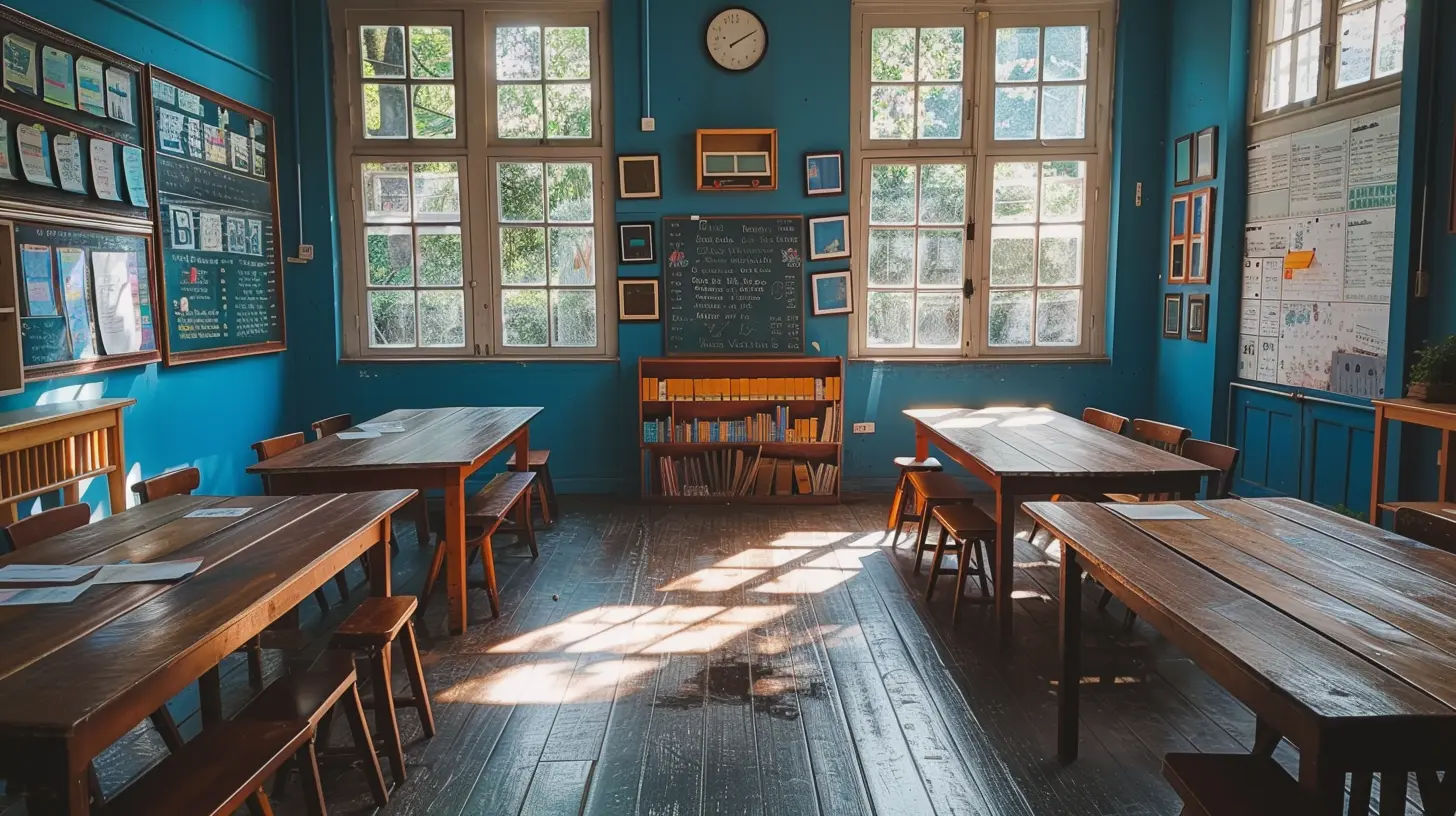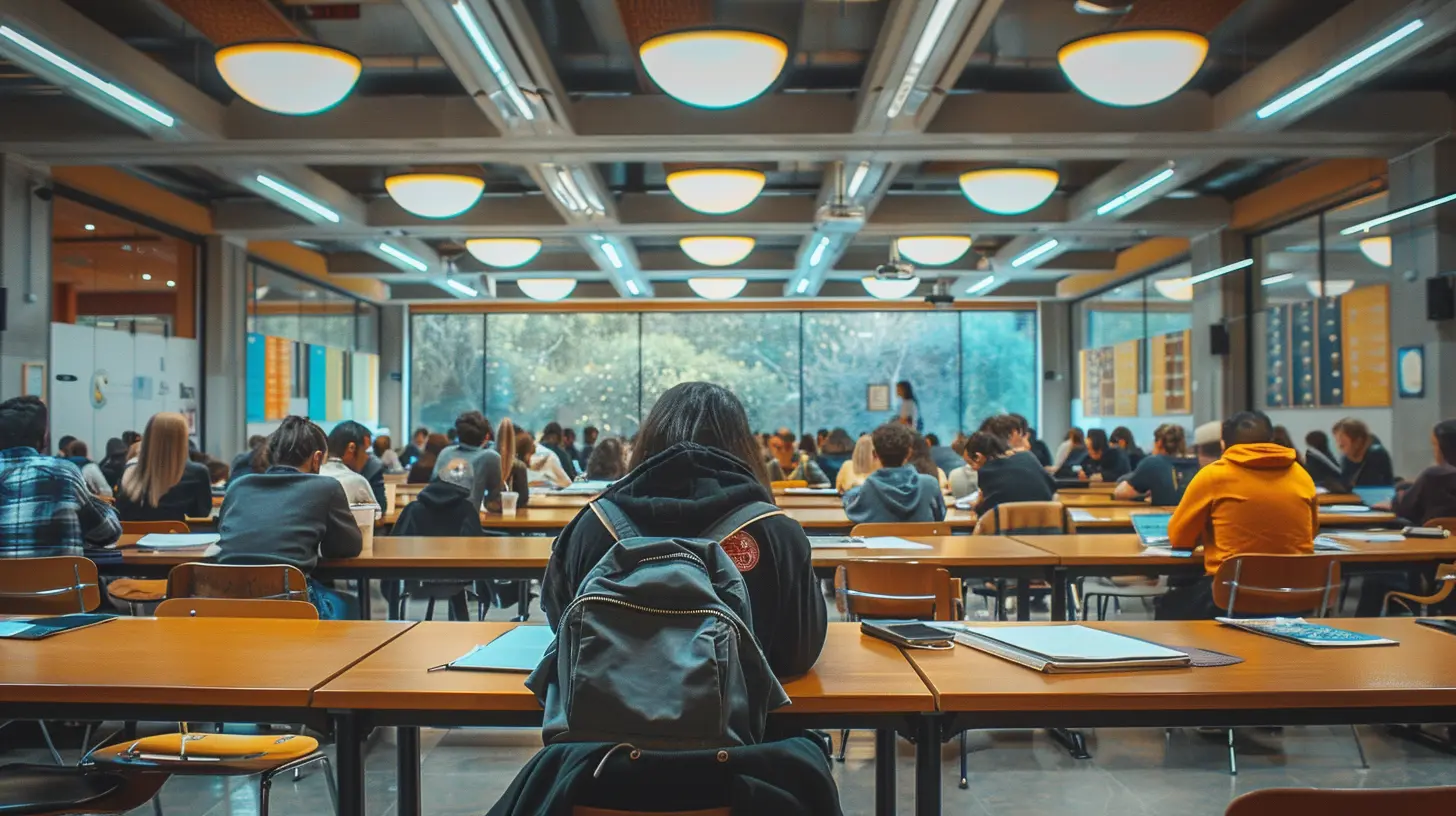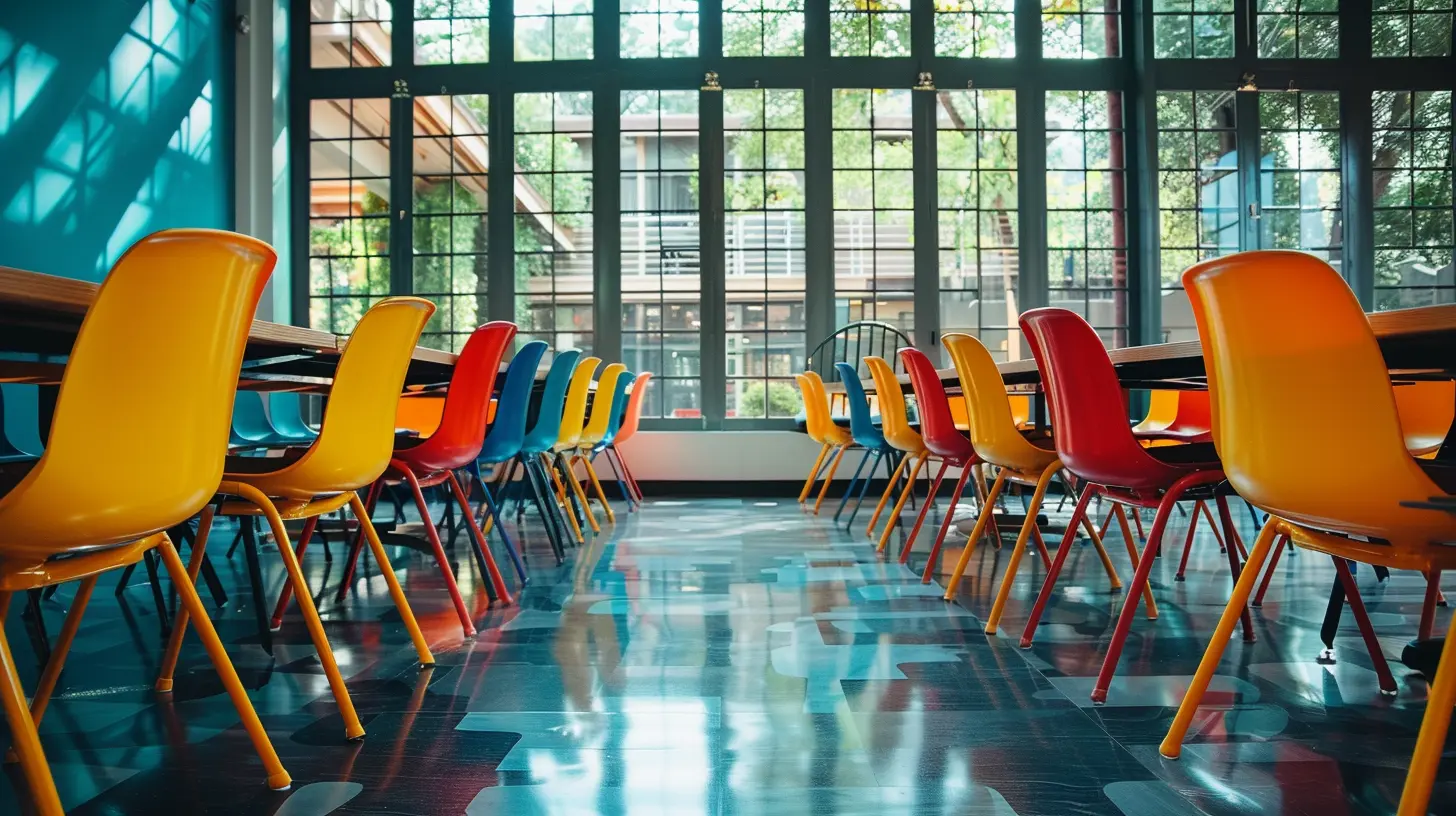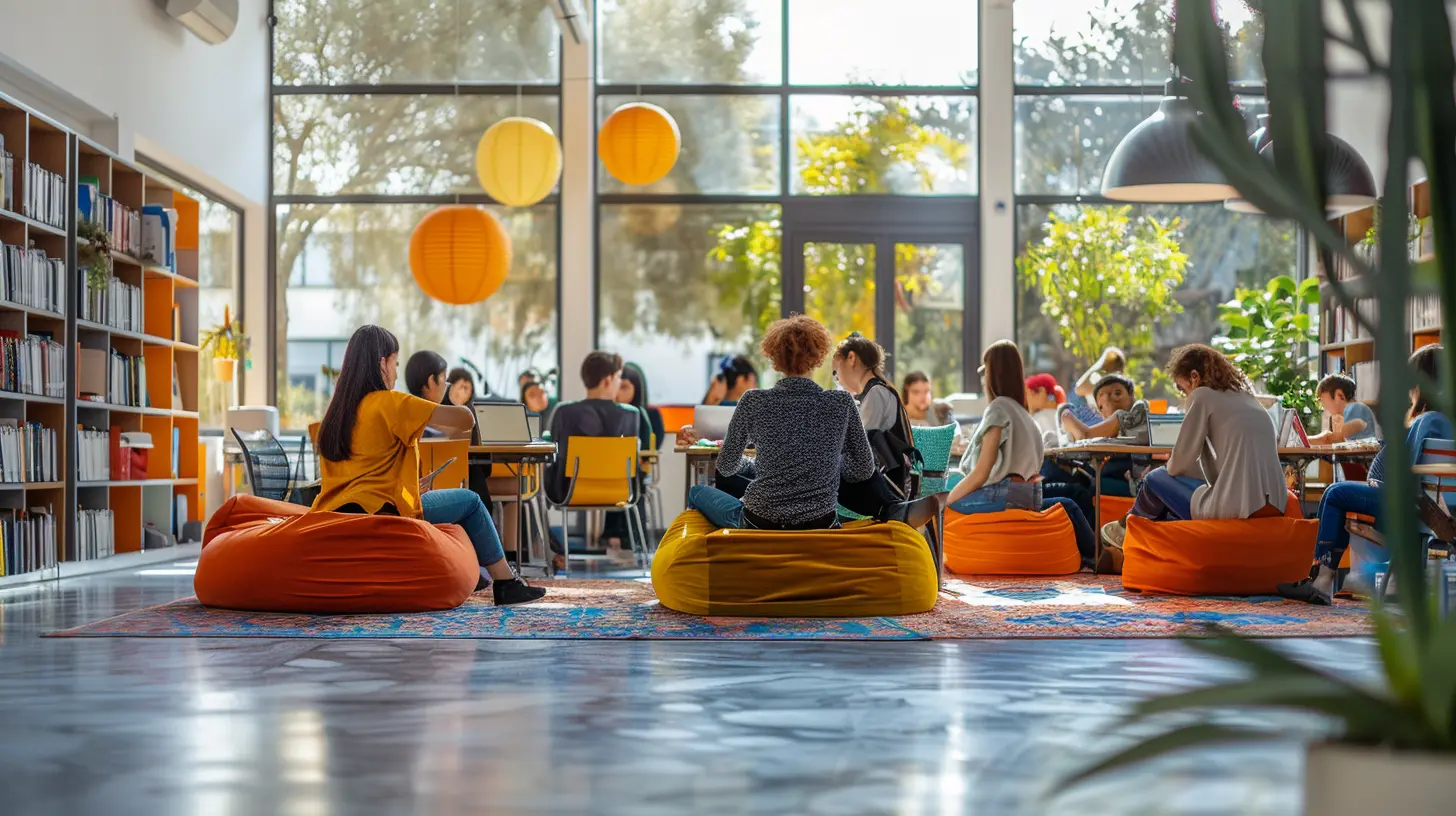How Classroom Design Can Impact Learning: Research-Based Insights
4 August 2025
When we think about education, the first things that come to mind are usually teachers, textbooks, and technology. But what if I told you that the very space in which students learn plays a crucial role in how well they absorb new information? Believe it or not, classroom design can significantly impact not only how students feel but also how well they perform academically.
In this article, we'll dive deep into the fascinating world of classroom design and its surprising influence on learning. We'll explore research-based insights, practical tips, and how you can create a learning environment that enhances both engagement and academic success. Ready to find out more? Let's get started!

The Power of the Learning Environment
Think about the last time you were in a room that made you feel energized, inspired, or even focused. Now, think about a space that made you feel cramped, distracted, or tired. Big difference, right? The same goes for students in a classroom environment.Classroom design isn't just about aesthetics; it's about creating a space where students feel comfortable, motivated, and ready to learn. Research shows that the physical environment of a classroom can influence everything from student behavior and engagement to cognitive performance and mental well-being.
But how exactly does this work? Let’s break it down.
Key Elements of Classroom Design That Influence Learning
Several factors in classroom design can impact learning outcomes. These include:1. Lighting
2. Seating Arrangements
3. Color Schemes
4. Acoustics
5. Temperature and Air Quality
6. Classroom Layout and Flexibility
Let’s take a closer look at each of these elements.

1. Lighting: Bright Ideas for Better Learning
We often take lighting for granted, but it can have a profound effect on how students learn. Studies have shown that natural light, in particular, can boost mood, improve concentration, and enhance overall cognitive function.Think about it: Have you ever felt sluggish under harsh, artificial lights? Well, students feel the same way. In fact, research from the Heschong Mahone Group found that students in classrooms with ample natural light performed up to 26% better on standardized tests than those in poorly lit rooms. Natural light helps regulate circadian rhythms, which keeps students more alert and focused throughout the day.
Pro Tip: If your classroom lacks large windows or access to natural light, try using full-spectrum light bulbs that mimic sunlight. Also, avoid harsh fluorescent lights, which can cause eye strain and headaches.

2. Seating Arrangements: More Than Just Chairs and Desks
Seating isn't just about where students sit; it's about how they interact with their surroundings and each other. Traditional rows of desks may work for lectures, but they can limit interaction and collaboration. Research suggests that flexible seating arrangements can encourage better engagement, creativity, and discussion among students.Types of Seating Arrangements:
- Rows: Good for focus but limits group work.- Clusters: Encourages collaboration and peer interaction.
- U-Shaped: Great for discussions and allows the teacher to easily engage with every student.
- Flexible Seating: Incorporates a variety of seating options like bean bags, stools, or standing desks to offer more freedom and comfort.
A study published in the Journal of Learning Spaces found that flexible seating positively impacts student engagement, especially when students have a say in how the space is arranged. Offering choices in seating can help students feel more in control, which can lead to improved focus and motivation.
Pro Tip: If you're contemplating a seating overhaul, try experimenting with different seating arrangements to see what works best for your students.

3. Color Schemes: The Psychology of Color in Learning
Colors can evoke emotions, change moods, and even influence learning. This is why choosing the right color scheme for your classroom is so important.- Warm colors like yellows and oranges can invoke feelings of warmth and positivity but can become overwhelming if used excessively.
- Cool colors like blues and greens tend to have a calming effect and are often associated with creativity and focus.
- Neutral tones like white or beige can make a space feel more open and uncluttered, but too much neutrality can feel sterile and uninviting.
According to a study by the University of British Columbia, blue environments enhance creativity, while red environments improve attention to detail. So, using a mix of colors depending on the classroom’s intended use can be beneficial.
Pro Tip: Use bright, inviting colors for creative spaces and calmer, cooler tones for more focused activities like reading or test-taking.
4. Acoustics: Cutting Down on the Noise
Ever tried to concentrate in a noisy room? It's tough, right? Noise levels in classrooms can severely impact a student’s ability to focus and retain information. Poor acoustics can lead to increased stress, fatigue, and difficulty hearing the teacher, which can hinder learning.According to the Acoustical Society of America, proper classroom acoustics are critical for younger students, especially those under the age of 13. Younger children are still developing their auditory processing skills, so they are particularly sensitive to background noise.
Pro Tip: If your classroom has a noise issue, consider adding sound-absorbing materials like carpets, acoustic panels, or even curtains to minimize distractions. You could also employ white noise machines to neutralize the sounds of chatter or outside traffic.
5. Temperature and Air Quality: Comfort Is Key
No one likes sitting in an overly hot or freezing cold room. Just like lighting, temperature and air quality can have a direct effect on student concentration and performance. Studies have shown that the optimal temperature for learning is around 70-72°F (21-22°C).Air quality is equally important. Poor ventilation can lead to a buildup of carbon dioxide, which can make students feel drowsy or fatigued. Research published in the Indoor Air Journal found that improving air quality in classrooms can improve student performance by up to 15%.
Pro Tip: If your classroom has poor air circulation, consider adding air purifiers or regularly opening windows to let fresh air in. It may seem like a small change, but it can make a big difference in student alertness and energy levels.
6. Classroom Layout and Flexibility: A Space That Adapts
Gone are the days where classrooms had to have rigid layouts with fixed desks and chairs. Today, flexible classroom designs are becoming more popular—and for good reason. A flexible classroom layout allows both teachers and students to adapt the space to different activities, whether it's group work, individual study, or a class discussion.Why Flexibility Matters:
- Adaptability: Different tasks require different setups. A flexible classroom allows for quick changes depending on the lesson plan.- Engagement: Students are more likely to be engaged in a dynamic environment where the space changes according to their needs.
- Ownership: Allowing students to help configure the room fosters a sense of ownership and responsibility for their learning environment.
Pro Tip: Try incorporating mobile furniture like desks on wheels or modular seating arrangements. This gives you the freedom to switch up the room as needed without much hassle.
The Role of Technology in Modern Classroom Design
We can’t talk about classroom design without mentioning technology. The rise of smart boards, tablets, and other digital tools has revolutionized the way students learn. But with technology comes the need for thoughtfully designed spaces that support its use.For example, classrooms need to have enough power outlets, Wi-Fi access, and ergonomic furniture to accommodate devices. But it’s not just about logistics—technology should be seamlessly integrated into the design to enhance, not detract from, the learning experience.
Pro Tip: Consider creating designated "tech zones" where students can use devices without distractions. This helps maintain balance between traditional learning methods and digital tools.
Classroom Design and Student Well-Being
Beyond academic performance, a well-designed classroom can significantly impact a student’s emotional well-being. A welcoming, comfortable environment can reduce stress, increase feelings of safety, and promote positive social interactions.In fact, studies show that students who feel more comfortable in their surroundings are more likely to participate in class discussions, collaborate with peers, and feel a sense of belonging. And when students feel good, they’re more inclined to learn.
Pro Tip: Don’t forget the importance of creating spaces for relaxation or downtime, like reading corners or quiet zones, where students can recharge between lessons.
Conclusion: The Classroom as a Learning Partner
In the end, classroom design is about more than just aesthetics; it’s about creating an environment that actively supports learning. From lighting and seating to color and acoustics, every detail can make a difference in how students engage with the material and with each other.By paying attention to these elements, teachers and educators can create spaces that not only foster academic success but also promote well-being, creativity, and collaboration. So, the next time you walk into a classroom, remember—you’re not just entering a room, you’re stepping into a learning ecosystem!
all images in this post were generated using AI tools
Category:
Educational ResearchAuthor:

Madeleine Newton
Discussion
rate this article
1 comments
Harlow Phelps
Thank you for sharing these valuable insights on classroom design! It’s inspiring to see how thoughtfully arranged spaces can foster learning and emotional well-being. Creating environments that support diverse needs truly empowers both educators and students, enhancing collaboration and engagement. Great read!
August 11, 2025 at 11:21 AM

Madeleine Newton
Thank you for your thoughtful comment! I'm glad you found the insights valuable and inspiring. Creating supportive environments truly makes a difference in learning.


